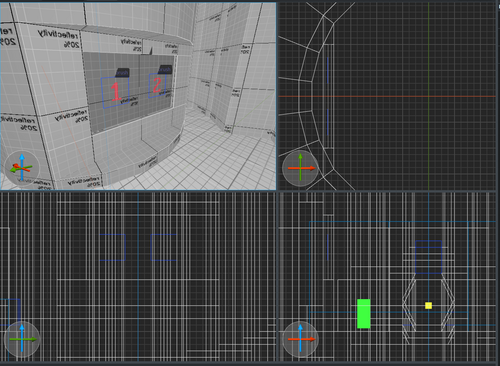The Tech Behind karyogenesys

Some of you may be curious about what the tech stack behind karyogenesys is composed of, so I'm here to shed some light on it!
Our game is proudly made with the FTEQW engine, a long matured offshoot of the 1996 Quake engine. It supports a huge range of model, sound and texture formats and has robust game authoring tools and features. It supports a wide range of target platforms, and for karyogenesys we will be targeting Windows, Linux, and Haiku.
FTEQW was chosen due to its extensibility, our existing familiarity with the engine, and the Quake engine lineage. It's well optimized, portable, and powerful.
The levels in karyogenesys are authored with TrenchBroom, and compiled with the ericw-tools compiler set. The output format is the extended "IBSP" format from the 2023 Quake II remaster. We use such enhancements as "Decoupled Lightmaps" (which allow for more consistent lightmap quality across the board) and high quality emissive light surfaces (as opposed to the traditional Quake engine method of placing a point-light every N units).
Game code is written in QuakeC, utilizing the FTEQCC compiler and the wealth of engine extensions that FTEQW provides. We use the standard FTEQW three module split setup (server, client, menu). Since QuakeC is compiled to a platform-agnostic bytecode file, there is no need to compile the game code for different operating systems or architechtures.
Models are exported into the Inter-Quake Model (IQM) format which allows for skeletal animation and other advanced features. This format is much more capable than the original Quake MDL format, while still allowing for simple vertex animated meshes if desired.
If you have any further questions about the tech powering karyogenesys, feel free to ask in the comments! I will respond with any clarifications or additional information.
Get karyogenesys
karyogenesys
awaken your starship. awaken yourself.
| Status | In development |
| Authors | erysdren, Lithish!, necrolavigne, PhantasmaCora |
| Genre | Interactive Fiction |
| Tags | 3D, Atmospheric, LGBTQIA, plural, Queer, Retro, Singleplayer |
| Languages | English |
| Accessibility | Subtitles, Configurable controls |
More posts
- Small Progress Update #1Jun 10, 2024
- Pre-orders now available!Oct 27, 2023
- Welcome to karyogenesys!Oct 23, 2023

Leave a comment
Log in with itch.io to leave a comment.